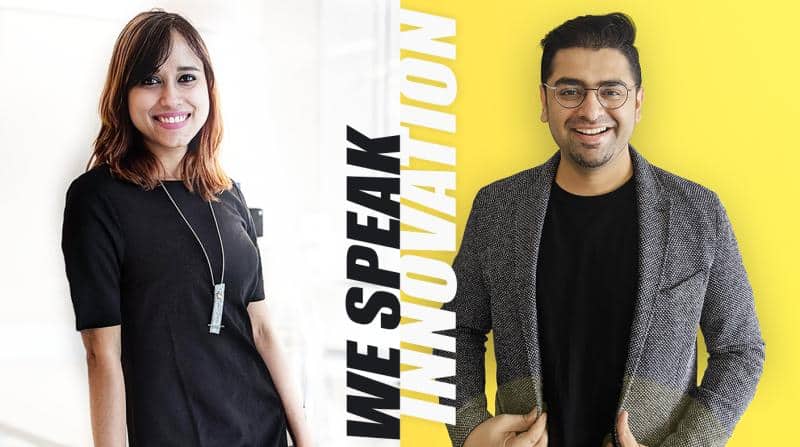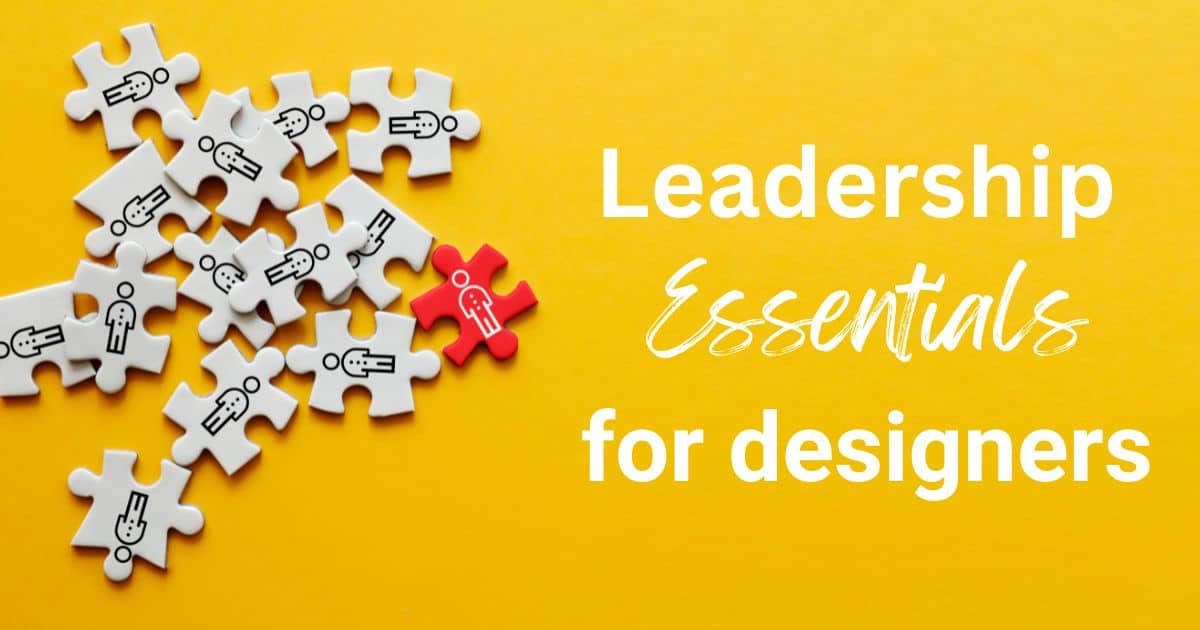How might we help our organization see design as a strategic advantage?
The team behind We Speak Innovation has a few ideas.
Prapti Jha is a Senior Design Strategist at Cisco, where she develops research-backed cybersecurity solutions to bridge the gap between user needs and the business. Harsh Wardhan is building and leading innovation programs at the Cloud Solutions Studio in Google Cloud, helping customers in their digital transformation journey.
The pair recently led a webinar for Pragmatic Institute in which they discussed human-centered design as a way to reduce what former dean of the Institute of Design Patrick Whitney calls “the innovation gap”: the gulf between how to make something (e.g. business models, technology innovations) and what to make (the patterns of how people live).
If you miss the point of desirability, that affects the success rate of the innovation.
Prapti and Harsh view the well-known Desirability, Viability, and Feasibility model as an innovation framework. Design starts from desirability, Prapti told attendees, “the human aspect, what people really value. Then, move to viability (should we make this, will it make us money) and feasibility (can we make this).”
“If you miss the point of desirability,” she said, “that affects the success rate of the innovation.”
A Case Study: Eataly, Chicago
Prapti worked on a project for Chicago’s Eataly—a large-format Italian marketplace comprising restaurants, food, and beverage counters, a bakery, retail items, and a cooking school—to improve the customer experience. The store wanted to bring shoppers back more frequently, as it had fewer number visitors during the week and more on the weekends.
So, Prapti and her team shadowed shoppers and interviewed stakeholders (shoppers, store managers, and staff).
- Eataly is seen as a premium and expensive experience.
- Eataly doesn’t fit into a customer’s mental model of regular grocery shopping. It’s supplemental to their grocery shopping plans, not the main event.
- Meanwhile, managers and staff view Eataly as a grocery store with everything customers need, from regularly-priced grocery items to Italian specialties.
“There was a huge value mismatch;” Prapti said, “the value the customer was seeing of Eataly as a place and the value that Eataly folks saw they were providing to the customers.”
She highlighted one of the team’s non-obvious solutions: grab-and-go meals. The meal service would allow people to pick up a healthy, prepared meal for lunch and head back to the office. “Why this worked really well from a business model perspective was Eataly was based around the offices downtown. People would grab a meal during lunch hours.”
What’s more, “Eataly already had a cooking school and restaurants, [so] there were chefs who, from a resourcing perspective, could cook,” Prapti explained, “Because there was not enough footfall during the daytime and the weekdays, this was a good way to use their time and use that resource for some new revenue generation. Bringing people back into the store, even just for five minutes, helps with the business part of it.”
Applying Design Methodologies to Business Strategy
The two explored a few areas where design can help an organization innovate, like strategic decision making and business models.
“You can use design thinking methodologies,” Harsh said, “to inform where you want to compete—in terms of geographies, product categories, what product you are going to come up with,” as well as channels and vertical stages of production. In the Eataly case study, they came up with a meal service.
Design can help determine an organization’s unique value proposition and competitive advantage.
“You can look at the consumer segments,” Harsh continued. “So, they were targeting the people who are busy, going to the office every morning. They are coming in for a coffee; now they could grab a meal.”
Another area where design can contribute strategically, Harsh said, is “what is unique about your service that is going to make you win.” In other words, design can help determine an organization’s unique value proposition and competitive advantage. Eataly customers already trust Eataly for high-quality, premium products. In the context of a meal service, the trust Eataly had built among customers was a competitive advantage.
Persuading Stakeholders to Embrace Design-Led Innovation
It’s one thing to understand how design can influence business strategy; it’s quite another to get senior leaders and executives on board. That narrative will vary greatly depending on who design teams are talking to in an organization.
“In my role, I [work] with a lot of clients and customers where we talk with the C-suite and the senior leaders trying to break down their problems,” Harsh said. “And one thing that has really resonated with them is that we spend a lot of time listening. We do a lot of interviews.”
But you can’t just listen, he continued. Designers have to return to those stakeholders and reflect back what they heard, asking if it resonates with what they were trying to say.
This is a collaborative exercise. “Help them frame the problems that you’re going to solve,” Harsh advised. “That’s the first step to get them excited, to make them feel that they have been listened to and that you understand their problems.”
“In my case, we do this externally,” Harsh said. “If you’re talking about your senior leadership in your company, then it’s bottoms-up. Then you have to go with some results. What we have done in past situations: we run a small pilot in our teams to use [design methodologies] to solve a certain problem and we go to our senior leadership and show them the results.”
For design teams meeting resistance, those results are crucial to helping their audience see the value in a human-centered approach. What really helps, Prapti said, is “understanding the metrics the organization uses for saying yes or no to a project or an idea; take those metrics and then add things that you see are missing.” That might mean adding a lens for success metrics that capture human value.
“Getting buy-in internally is including as many people as you can,” Prapti continued. “You don’t necessarily need to get to leadership directly. Let’s say a person in HR is connected to a lot of departments. How might we engage that person in a project you’re working on with them to get them excited so they can talk about it?”
“Creating people who can vouch for you when you are not in the room is a great way to [gain] buy in,” she said. Those champions can support design teams looking to successfully communicate new ideas or bring in new ways of working in their organizations.
* * *
Want to understand how design can impact business metrics, balance between desirability and viability, and contribute to business strategy? Enroll in Pragmatic Design’s new course Business Strategy & Design, or sign your design team up for private training.
Author
-

The Pragmatic Editorial Team comprises a diverse team of writers, researchers, and subject matter experts. We are trained to share Pragmatic Institute’s insights and useful information to guide product, data, and design professionals on their career development journeys. Pragmatic Institute is the global leader in Product, Data, and Design training and certification programs for working professionals. Since 1993, we’ve issued over 250,000 product management and product marketing certifications to professionals at companies around the globe. For questions or inquiries, please contact [email protected].
View all posts








